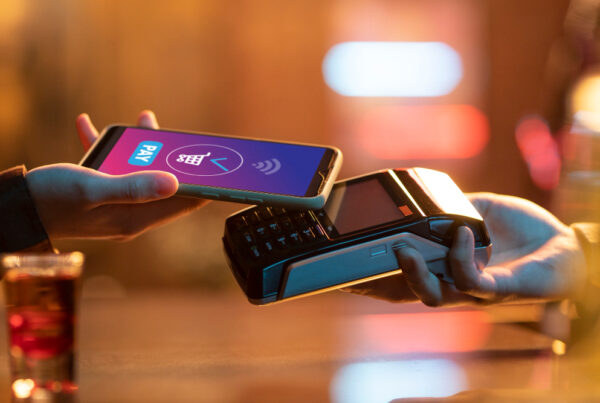1. Cloud Native SaaS POS – The Business Case
As Digital Transformation accelerates across industries, the biggest challenge that a Cloud Native SaaS POS addresses are the issues of ease and speed of adoption and scaling. The writing is on the wall for POS users – customized and complex workflows will be replaced by Standardized and maximum COTS coverage based implementations – but it’s the speed at which a Cloud Native SaaS POS can be adopted is the first and by far most emphatic business case. But it doesn’t end there.
Traditionally, POS systems were on-premise and specific to the store. But customers demand a lot more. From more information on the products that interest them to product variants, options, bundles, and alternatives, the demand for real-time information has made the legacy, on-premise POS obsolete. If not obsolete, extremely difficult to scale up to the customers’ demand. There is also the added complexity of multiple geographies, each with different buyer behavioral patterns and different tax and regulatory structures.
The cloud provides extensive capabilities to integrate the POS with the other facets of the supply chain, including the inventory, shipping options, promotions, discounts, and other decision-enablers. It still leaves the whole implementation, scaling out, and future resistance aspects in question. This is where Cloud-Native SaaS POS systems differentiate themselves. They’re easy to adopt, with little to no upfront investment, can be configured to suit the sales operations of each merchant, and most importantly, use new and emerging technologies to provide real-time information and action.
1.1 Technology that differentiates the SaaS POS
As we mentioned earlier, the customer journey is no longer linear, and expect near-infinite permutations and combinations in the customer journey from product selection to checkout and delivery. Enabling such a multitude of customer journeys requires a flexible back-end operations system that allows diversity in purchase options.
When visualizing a potential solution, the MACH architecture comes to mind – which stands for a Microservices-based operations system that uses an API-First approach, delivered through a Cloud-Native SaaS platform, and adopts Headless technology to disengage the front-end or head of the portal, from its back-end operations.
MACH is by far the most appropriate as it integrates intelligently with APIs, is extremely flexible and agile as it is microservices-based, is scalable almost infinitely with cloud-native SaaS, and last but not least, the headless technology that allows a start-anywhere, finish-anywhere POS experience.
The fundamental tenets of MACH that make Cloud-Native SaaS POS systems extremely successful are
- The Cloud Native stack, enabled by microservices and automation allows for an infinite permutation and combination of product SKUs, bundles, price points, discounts and promotions, and multiple checkout journeys
- Microservices also enable multiple payment modes including EMI options, delayed purchases, subscription-based purchases and so much more. This gives customers more options and incentives to remain loyal to your brand.
- The API-First approach offers extensive cross-platform compatibility to allow easy adoption and reduced entry barriers. You can start with your existing data, integrated with your SaaS POS through APIs, and use an Agile DevOps approach to increase your POS capabilities for engaging customers
- The Headless technology allows for a single source of truth across devices, stores, geographic locations, and payment options.
Think about a customer who sees a product on the website, walks into the store, scans the barcode with their mobile phone app, selects product options, quantity, size, variants, completes a self-checkout, and walks out of the store, while the POS system recognizes the order, address, payment method, and delivery timeframe, and triggers the relevant microservices to have the order shipped to the customer’s preferred address. This is indeed the need of the hour.
1.2 The Future as we see it
As Cloud-Native SaaS POS systems gain traction, we see AI coming to the forefront to help improve product and SKU display to customers, using analytics-driven and insights-oriented real-time customer profiling.
With the customer being profiled in real-time, we are more aware of their immediate motivations and preferences. AI leads to the automation of data aggregation, analysis, and data-driven automated decision making. These decisions can mean customer engagement with product-related information, comparison with other products, after-sales services, and warranties, or even checkout-completion incentives and discounts.
We see SaaS POS systems being utilized in a multitude of business cases including chains, franchises, and collaborations or joint ventures between multiple stores and enablers to offer a more unified customer experience.
BlueMarble’s Cloud-Native SaaS POS is one of the products in a suite of solutions we have created specifically for the retail space and offers:
- With a proven track record across multiple industries, BlueMarble has helped banks, insurance companies, e-retailers, and telcos streamline their back-end operations
- It is configurable to your POS requirements – you can define your landscape, the data sources, the different stores, geographies, portals, apps, and any other customer-facing interfaces where your POS system would be applicable.
- It can be adopted irrespective of the current landscape. Whether you have an on-prem, cloud, hybrid, or any other POS architecture, BlueMarble works for you
- BlueMarble offers compliance with the TMF openAPI standards as well as the Shared Information and Data model (SID) standards
- Tenant Billing for Using SaaS instance is also available, for franchises and for allowing your cloud-native SaaS POS to be deployed by third-party enablers, kiosks, and partners. You can easily identify the metered billing for each instance and use it for billing your partner network appropriately.
1.3 Making it work
Cloud-Native SaaS POS systems are the future. With an agile DevOps model that continuously integrates and continuously deploys new features, functionalities, integration options, and intelligent automation, BlueMarble SaaS POS can help you stay ahead of the competition by offering differentiated, and distinguished customer journeys that are flexible, reliable, and future-proof.






